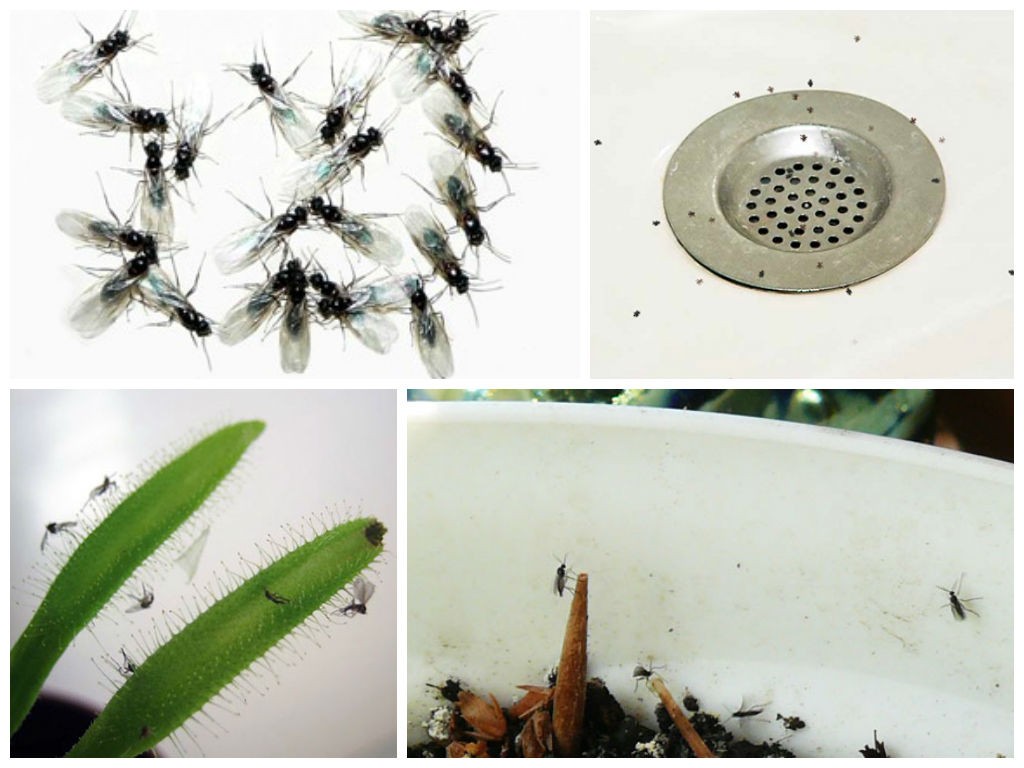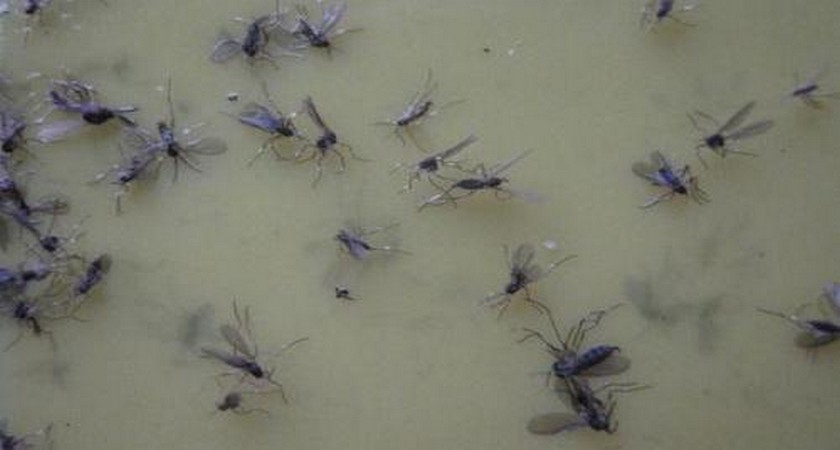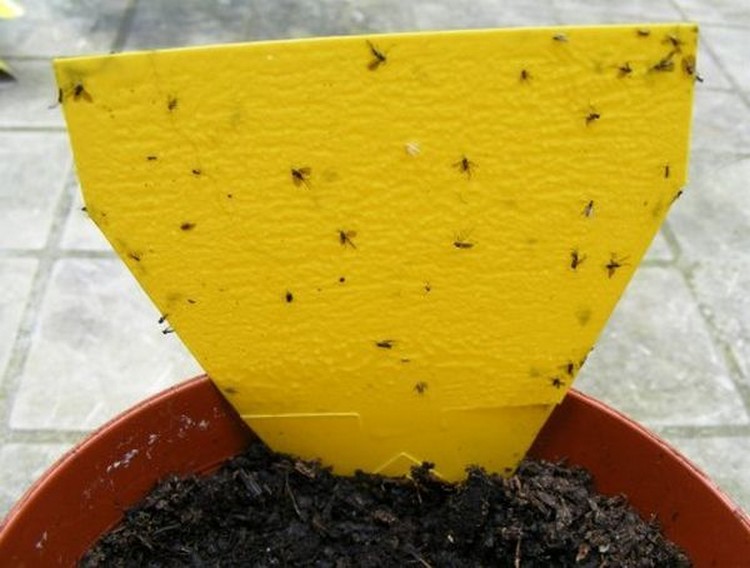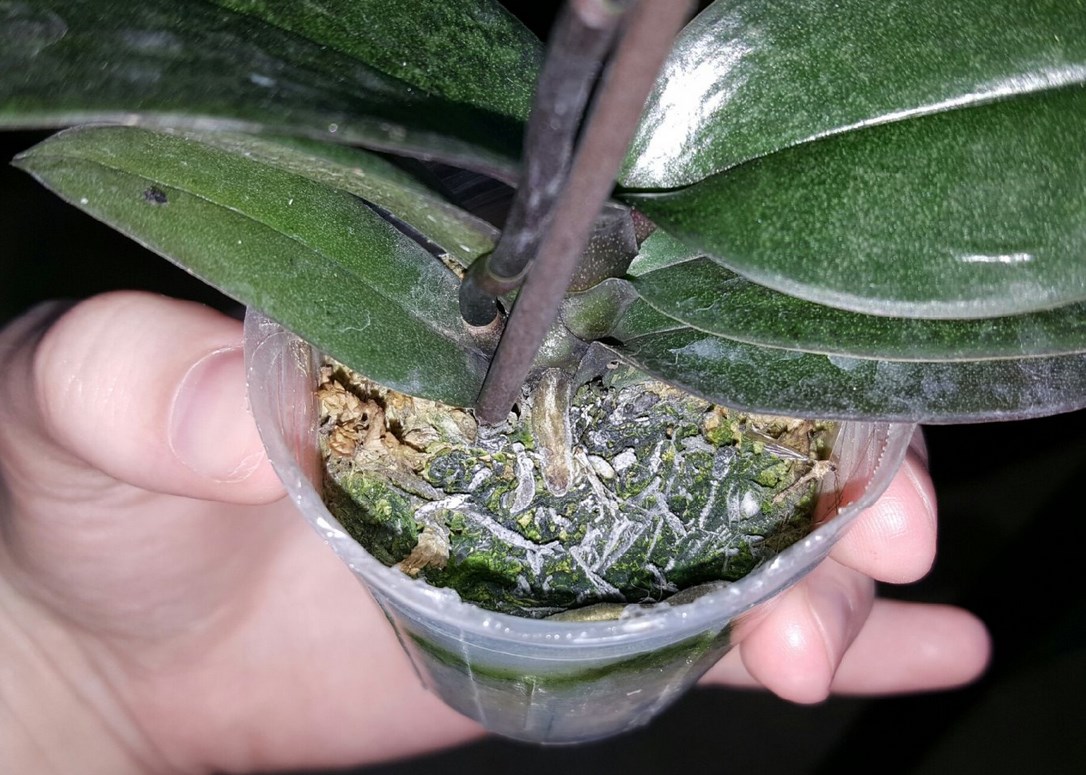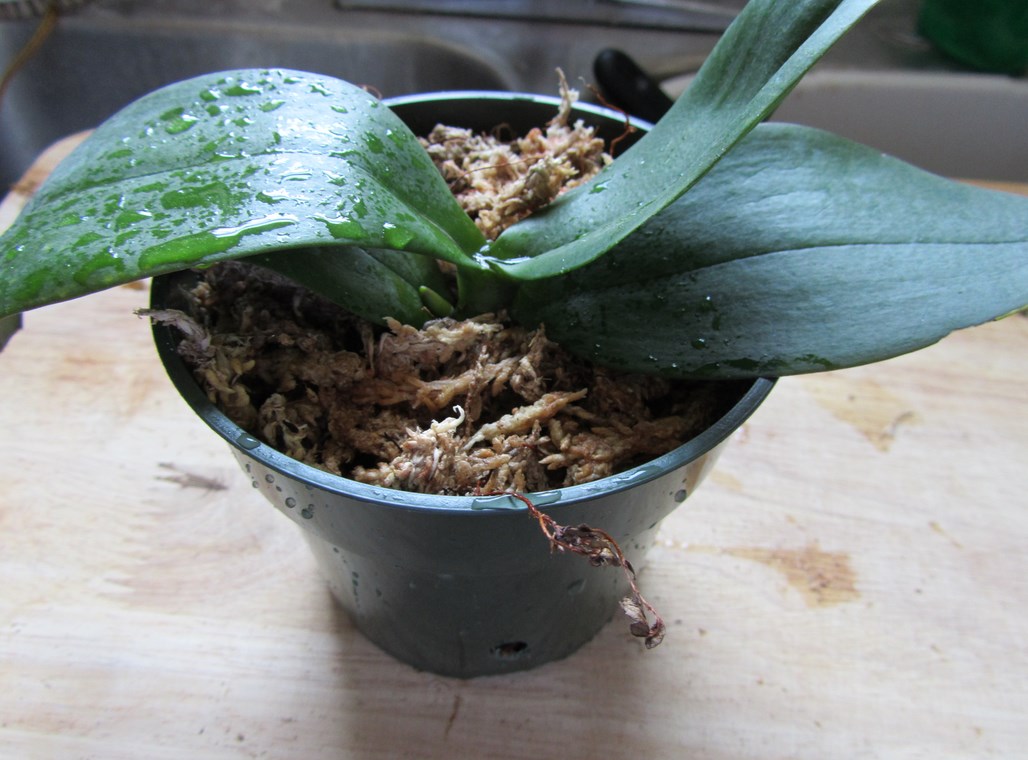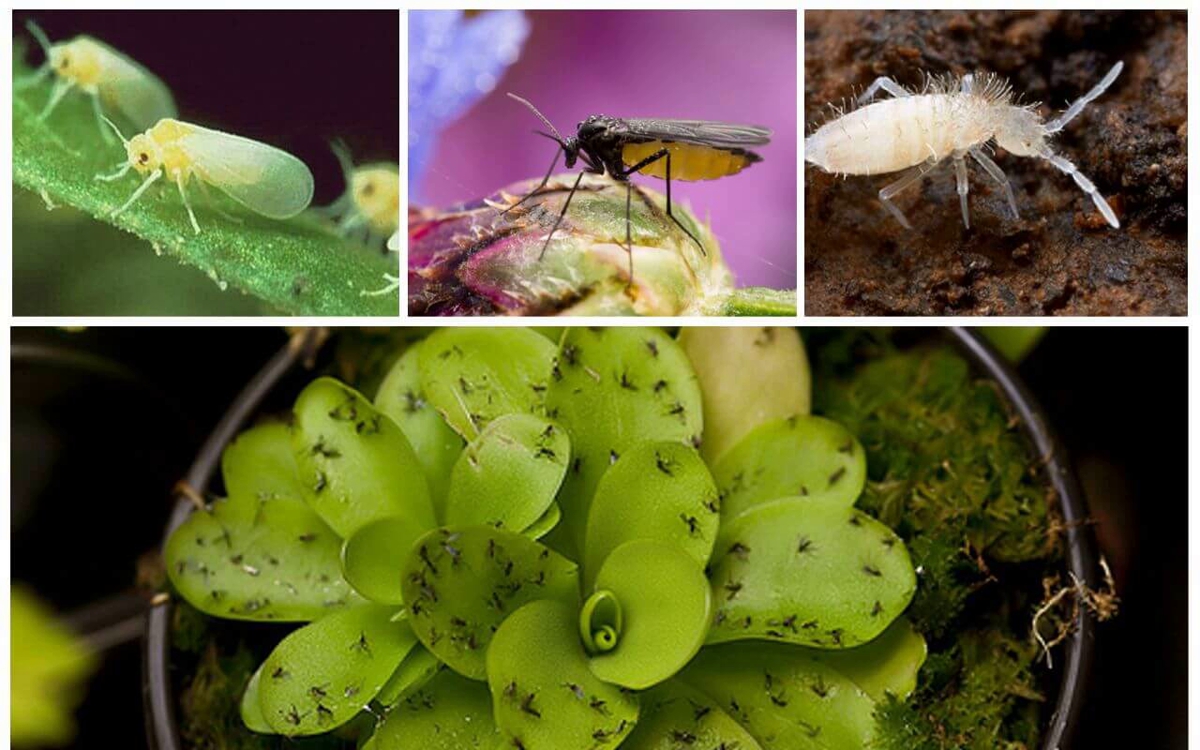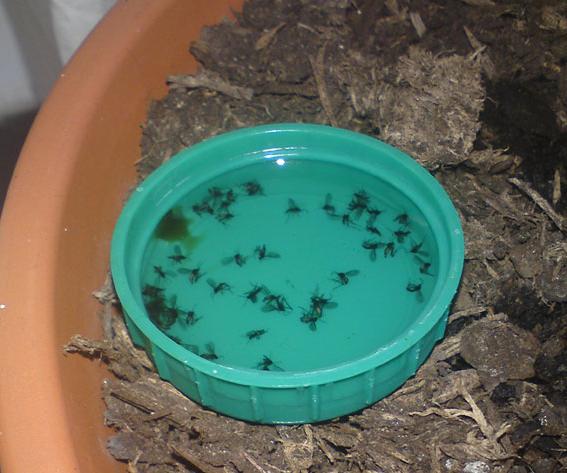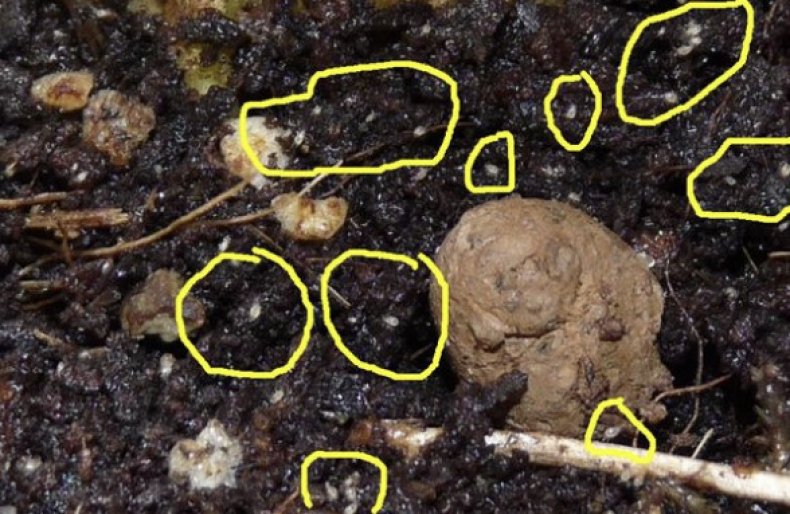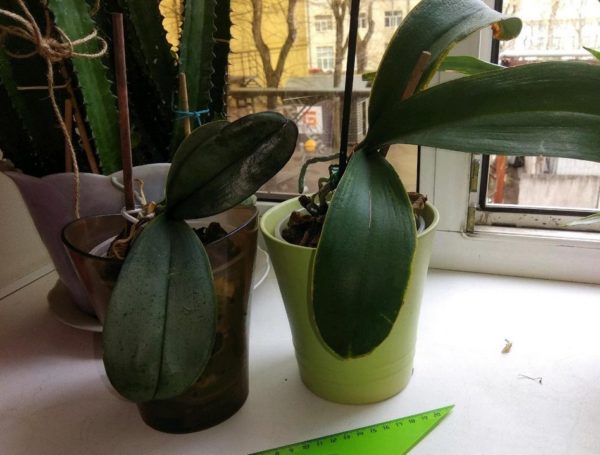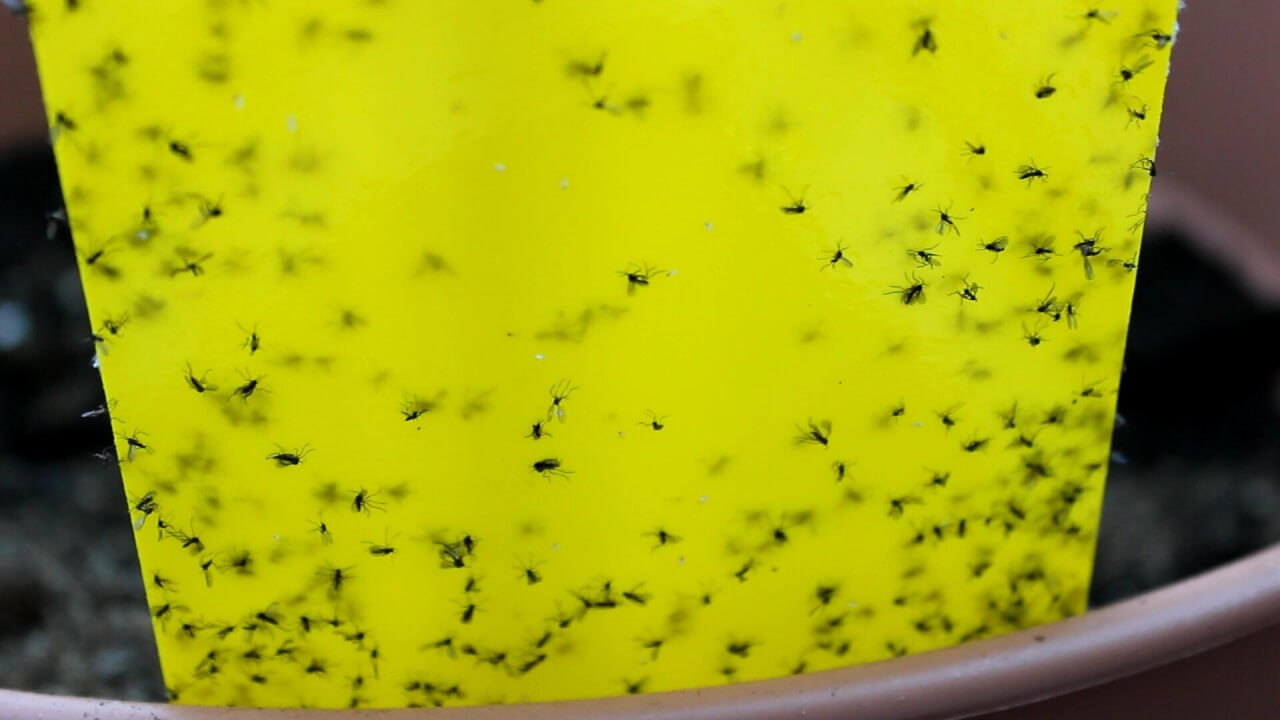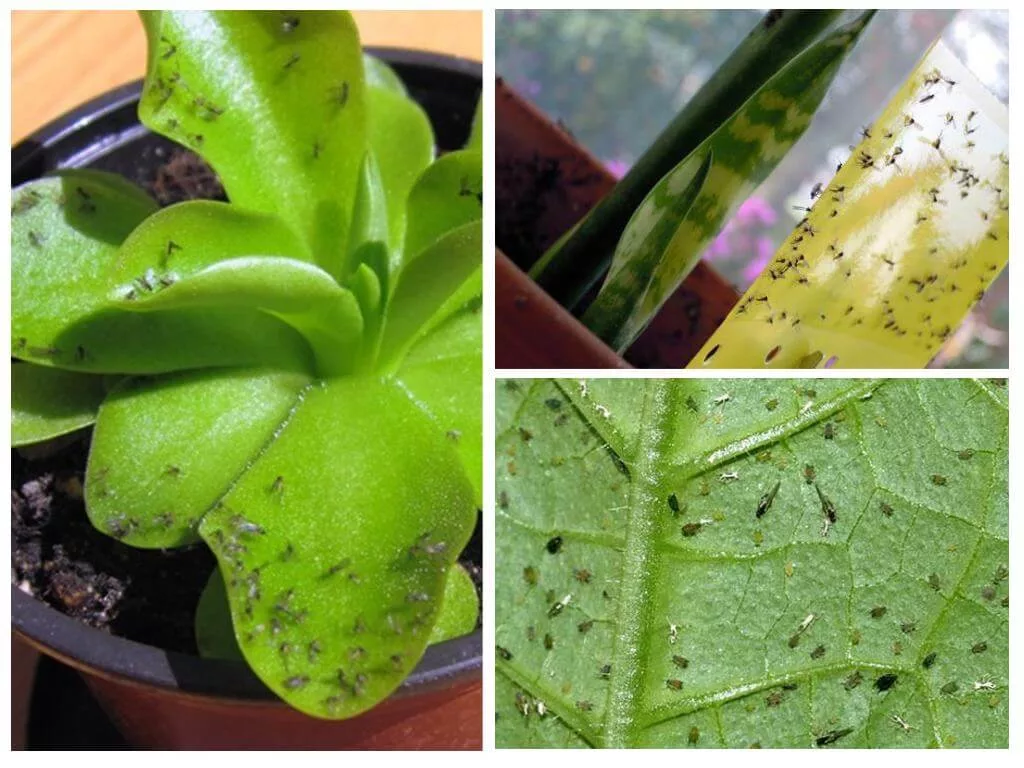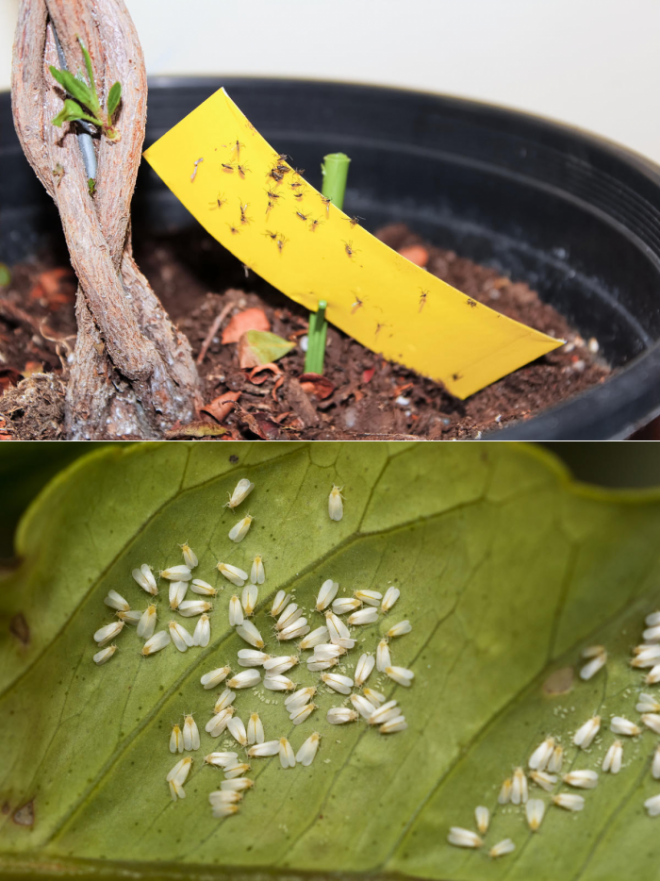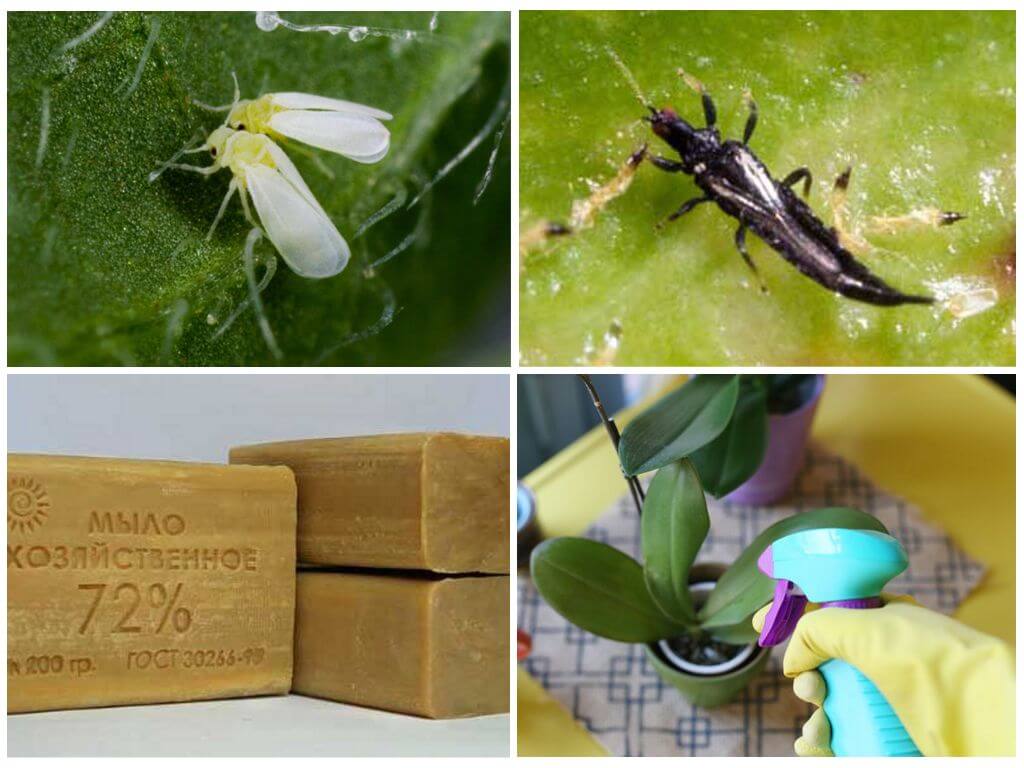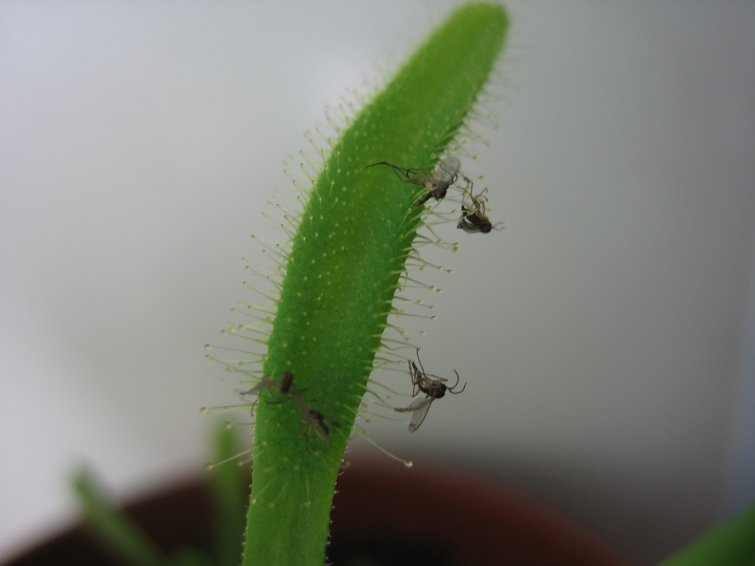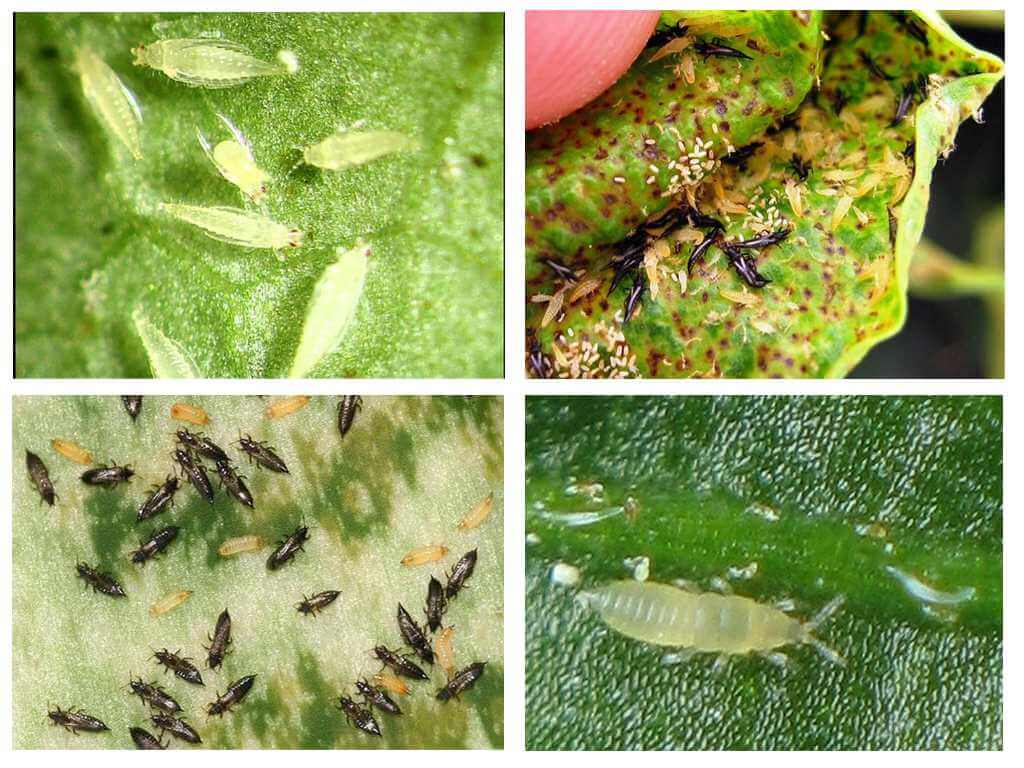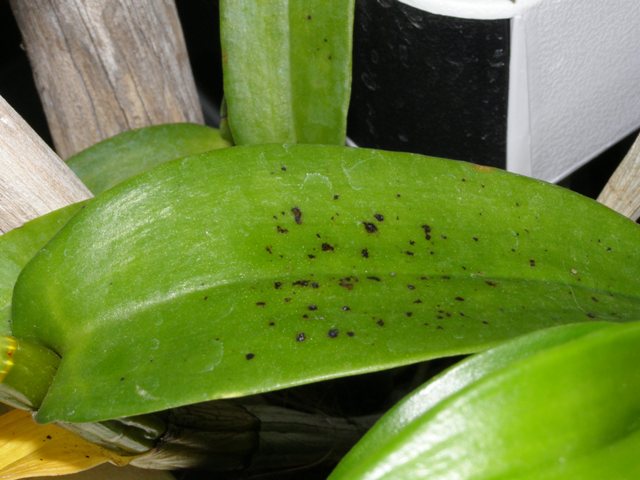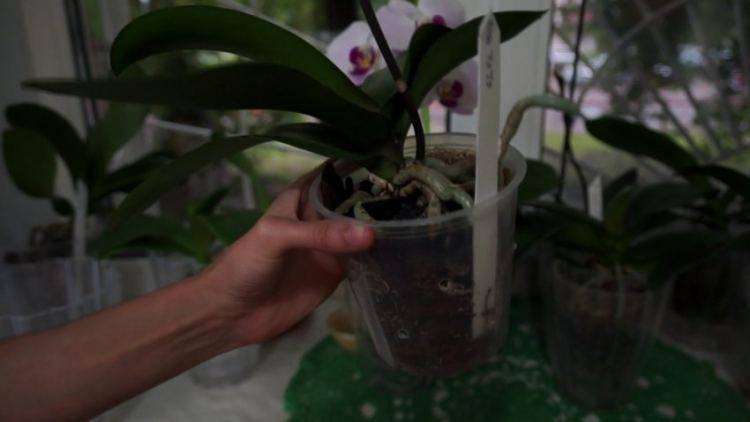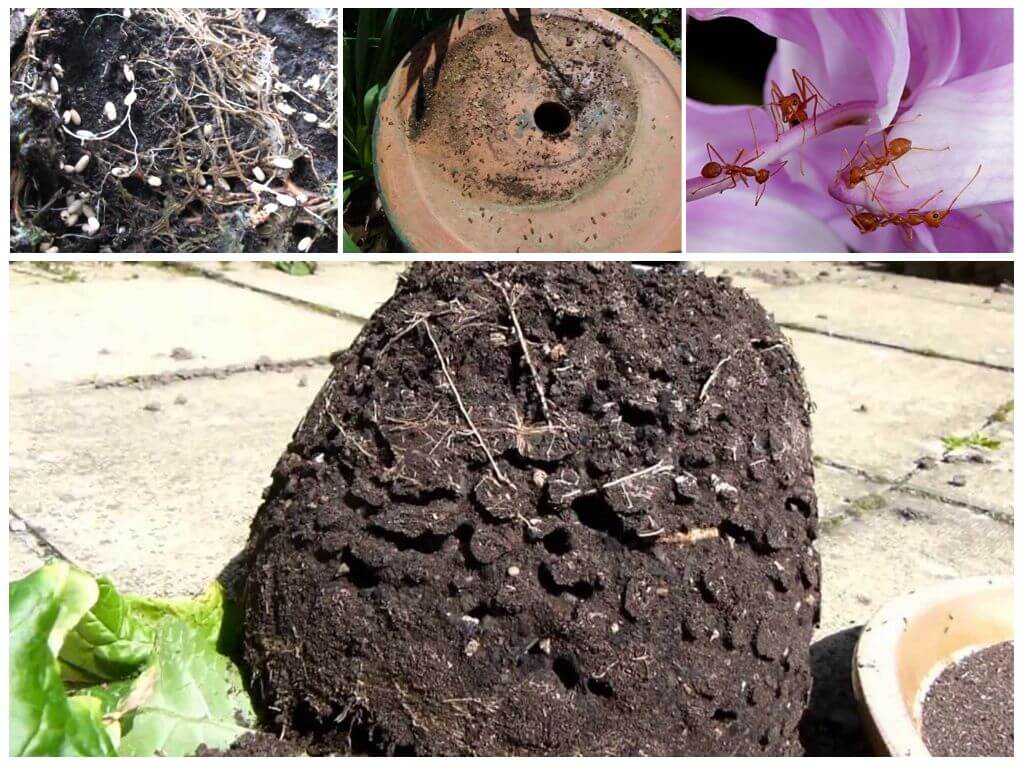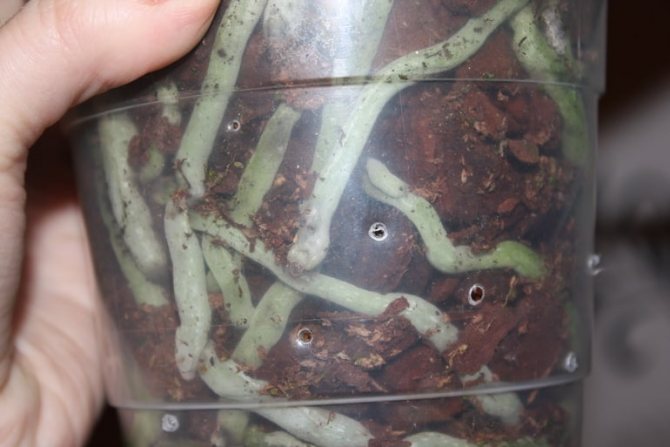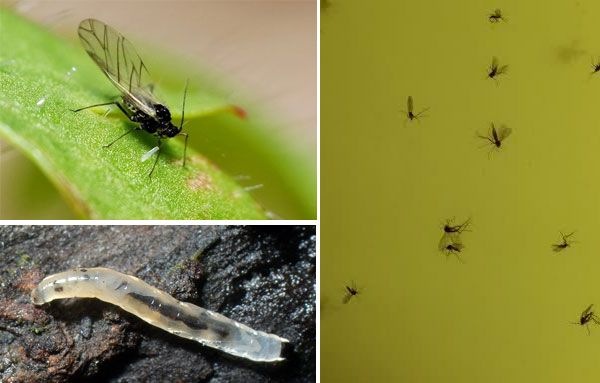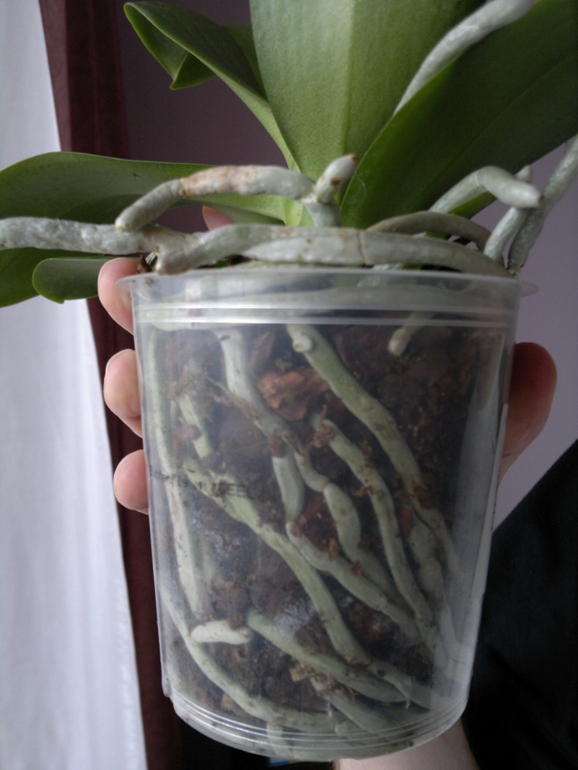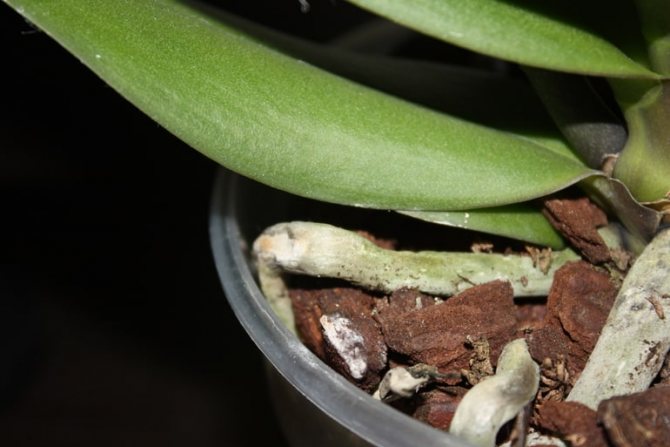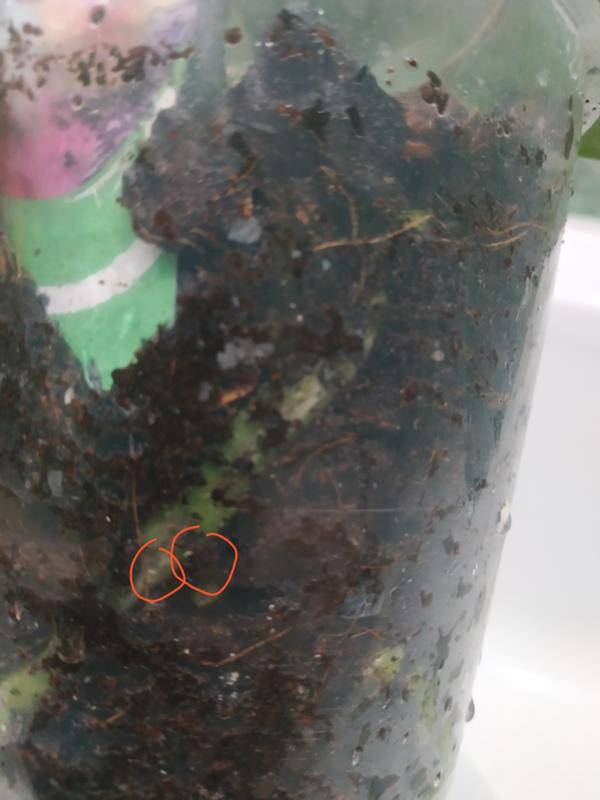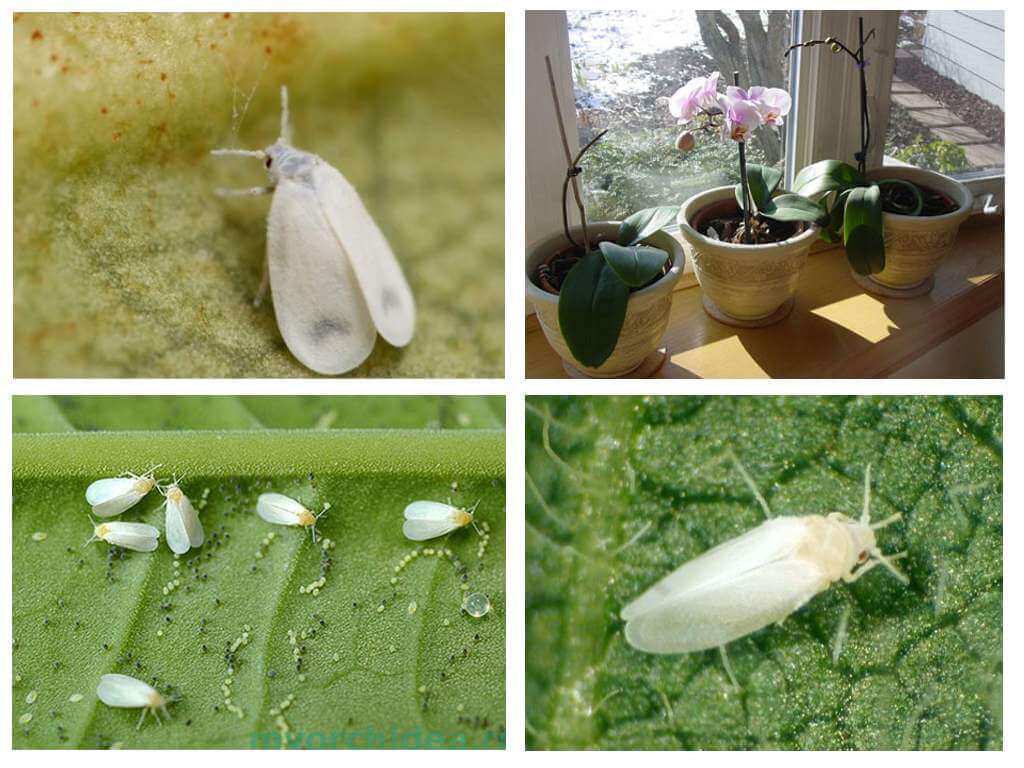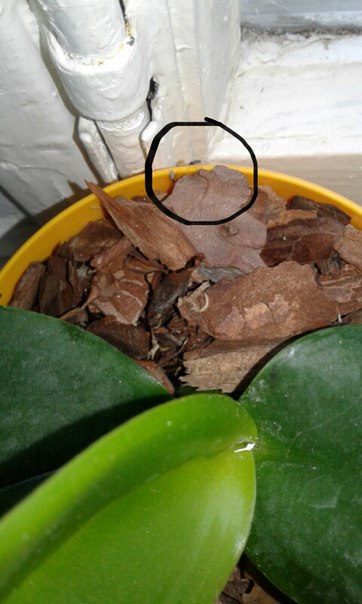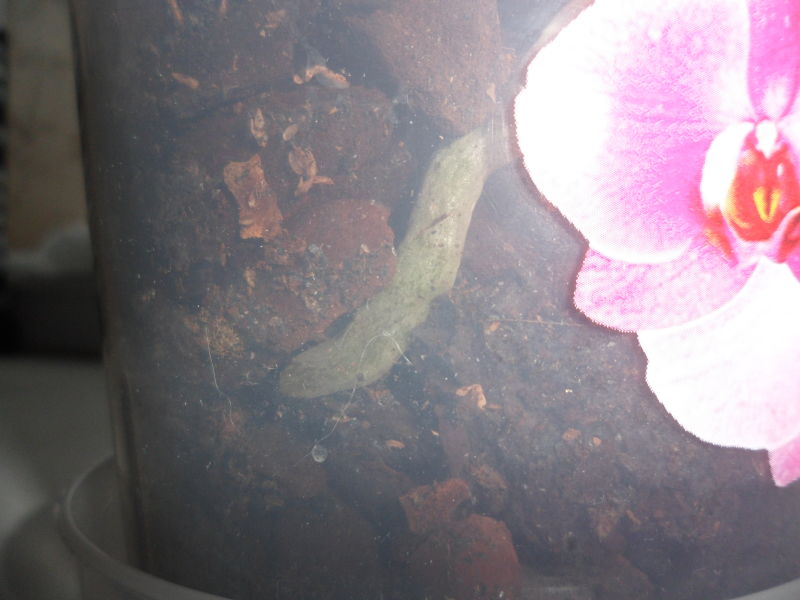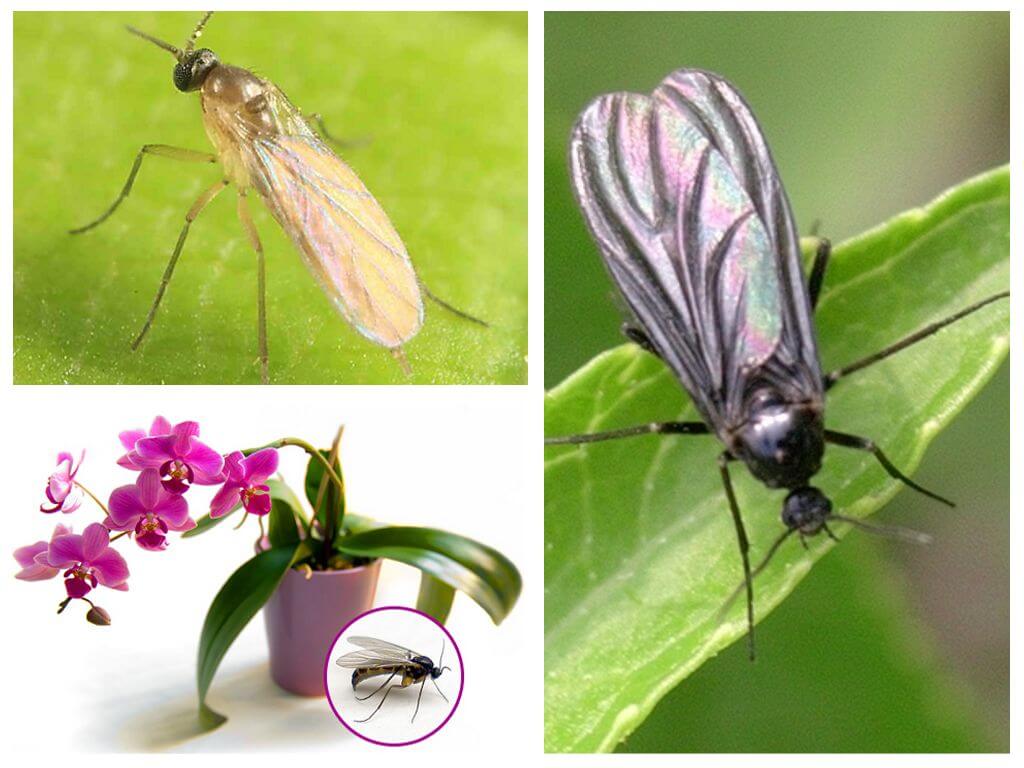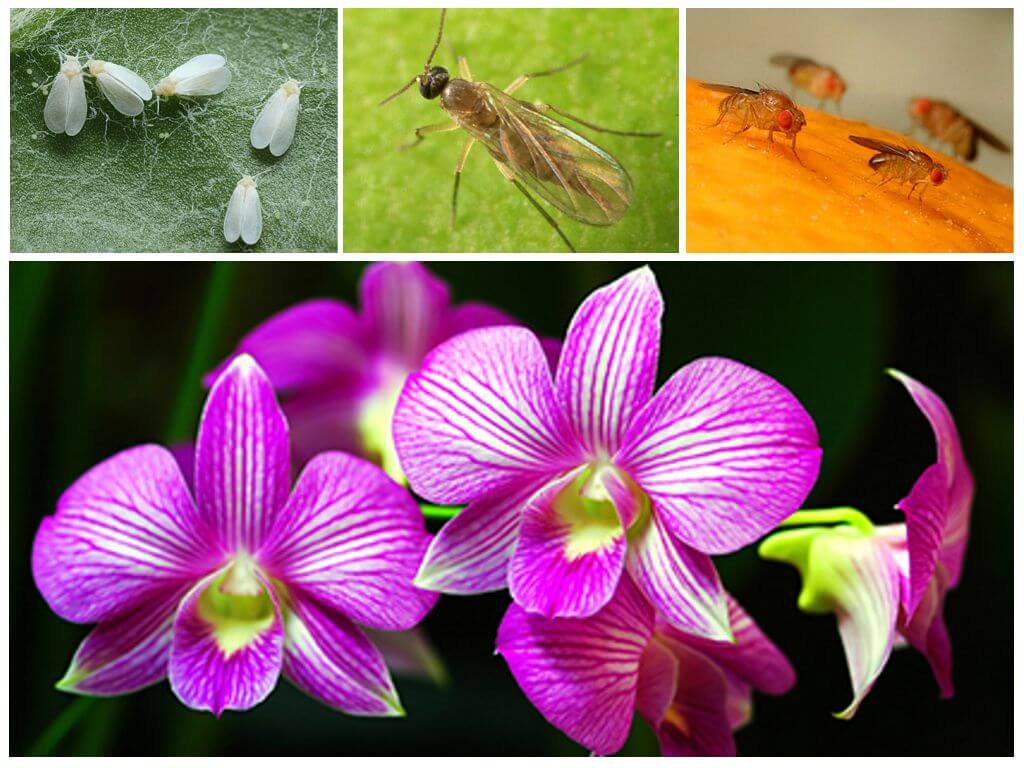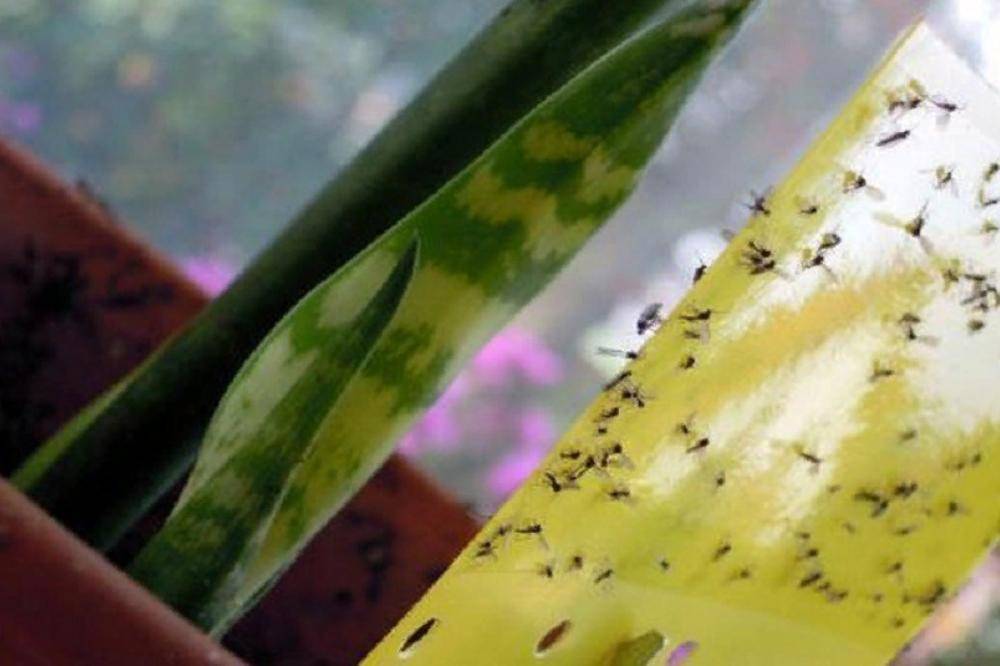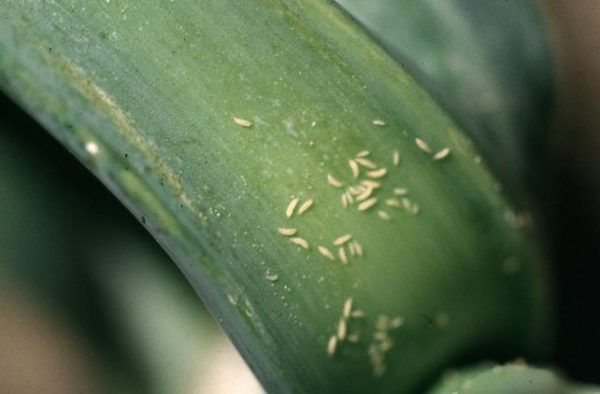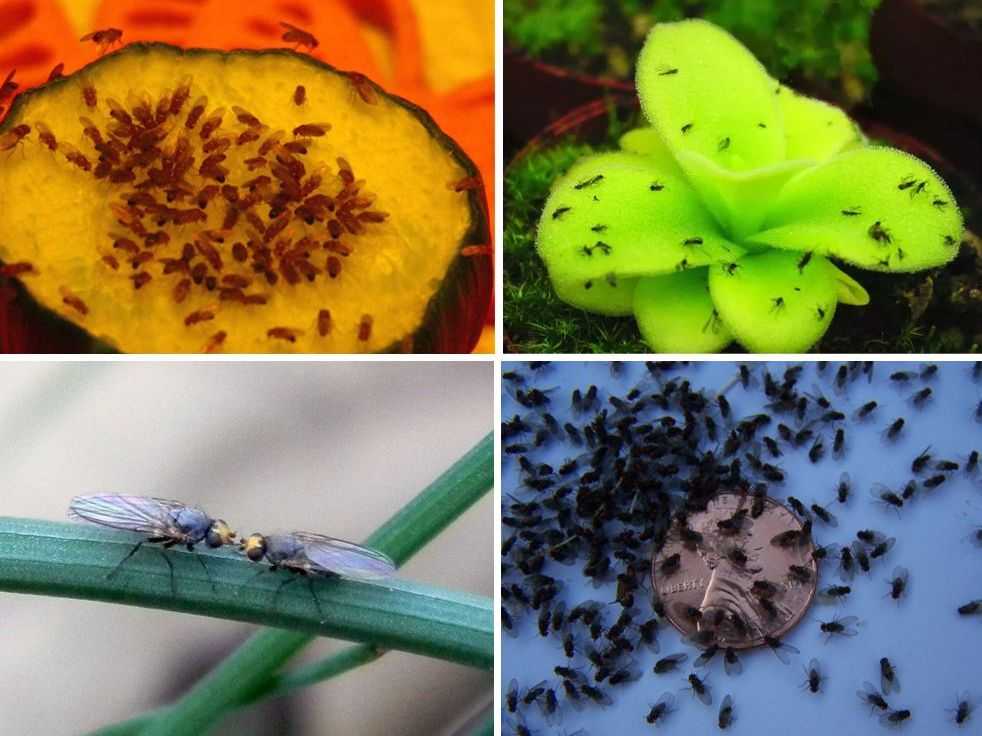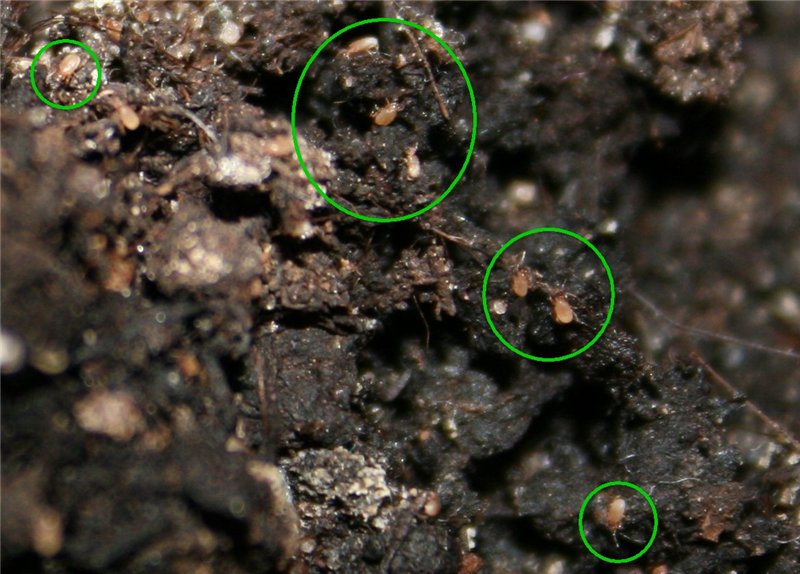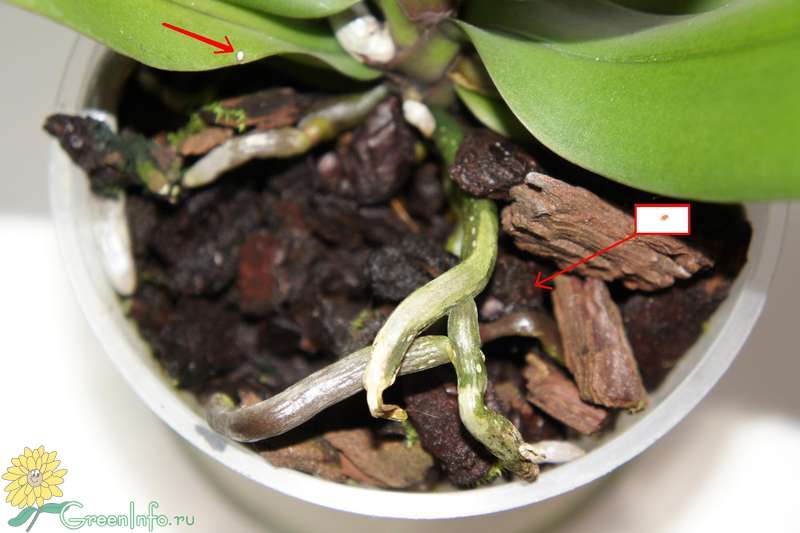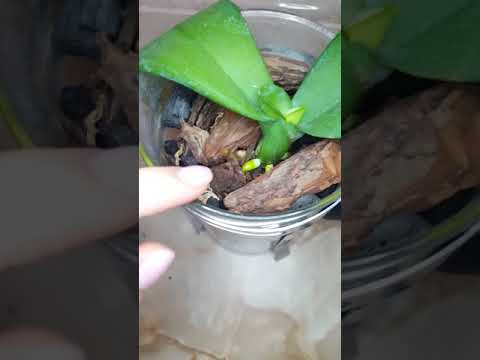Prophylaxis
To avoid new infections of the soil cover by various pests and to maintain the health of the entire plant, the condition of the plant should be monitored. It is necessary to carry out preventive actions:
Standing near the plant with a solution of itoverm or actellik.
It is extremely important to keep the inside and outside clean, so it is necessary to rinse the substrate and wipe the leaves to prevent the bugs from finding a favorable habitat.
The place where the orchid stands must always be kept clean, then the plant will never start puffs, and other insects harmful to home flowers.
If you become a happy owner of an orchid, do not forget that your new family member can also get sick, which will negatively affect other inhabitants and you, because you will not get the share of aesthetics that you hoped for if your flower is affected by pests. therefore, be attentive and caring so that the color of your plant will delight you for as long as possible.
We recommend that you look at our other materials on what to do and how to get rid of such orchid pests as: mealybug, scale insect, mite, including spider mite.
Pest types
Before wondering how to get rid of midges in orchids, you need to know exactly what insects are among the plants. They not only look different, settle and eat, they cause different harm, so they will also have to be inventive to fight.
Sciarids
Sciarids (mushroom gnats, flower midges) fly over the plant without hiding. These are small black insects, not exceeding 5 mm in length, they choose moist soil containing peat or moss for reproduction, they often come home along with nutrient soil for flowers. They are completely harmless to flowers, but sciarid larvae are white worms up to 7 mm long, damage the roots, inflict wounds that not only weaken the plant, but become foci of decay or fungal diseases. You need to try to get rid of them at the first detection.
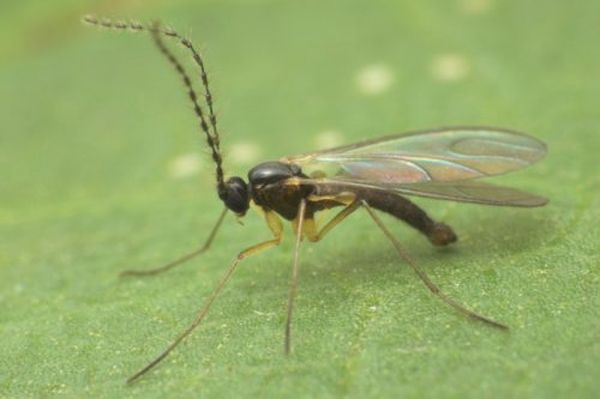
Whiteflies
If small white midges are bred on the orchids, which fly out every time they touch the leaves or the ground, then measures must be taken urgently - tiny butterflies with white wings can cause enormous harm to the plant. They settle on the leaves themselves, preferring flowers with thin leaves, leaving offspring under pieces of bark or on the surface of the leaves. Adults and larvae eat the sap of plants, therefore, with their appearance, the leaves gradually turn yellow, curl, wither and fall off. If you don't start fighting immediately, you might lose the entire flower.
Thrips
The fact that these pests have appeared on orchids is evidenced by the increasing number of tiny dark specks and the finest silvery coating on the leaves. It is better to isolate the affected plant immediately in order to protect others from thrips - tiny black creatures whose body length does not exceed 2.5 mm. They try not to catch the eye of a person, they hide among the ground, flying out only at night.
As soon as they start, the plant begins to wither, because thrips lay their eggs in the leaf tissue, all their offspring eat plants together, which causes all its parts to suffer. Very small larvae are almost impossible to notice with the naked eye, and in order to see adult parasites, flower growers often sit near an orchid at night, waiting for pests with a flashlight.
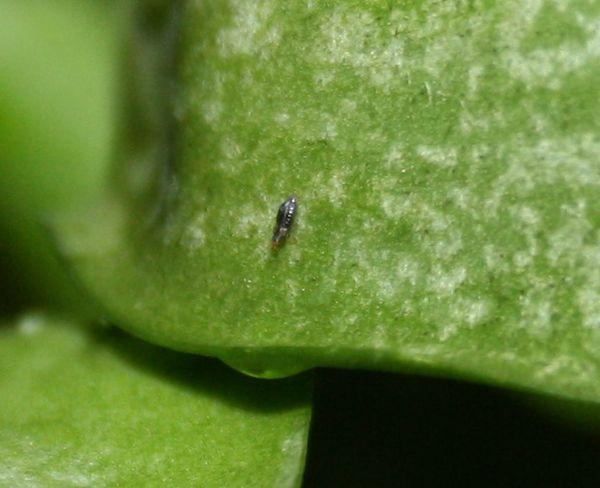
Fruit midges
If fruit flies, which are also called fruit midges, start on the orchid, then this indicates excessive watering.These insects do not harm flowers, they can start if you fertilize the flowers with tea leaves, if the moss begins to decompose, if the substrate does not dry out between waterings. Drosophila always appear where vegetables or fruits begin to rot, where plant residues lie uncontrollably, putting things in order with the storage of fruits, we immediately get rid of them.
Where and why do midges appear in orchids
It often happens that pests are brought into a house with purchased soil. This is an indicator that the bark in which the plant is planted was not properly stored and was not disinfected. In such an environment, it is enough just to plant a plant and water it. An increased activity of midges will immediately appear, which will quickly multiply. If the living conditions in neighboring flower pots are suitable, insects will quickly settle there.
(Video: "Midges in the ground (substrate): reasons how to get rid of them.")
Midges are also capable of penetrating into the home on their own. However, they are quickly removed if they do not find suitable conditions. Every florist must remember that these pests are attracted by the increased moisture content of the soil. Therefore, frequent watering increases the risk of midges. The main reasons for the appearance of midges can be distinguished:
- abundant watering;
- decorative moss, which is laid on the ground;
- watering with bread water;
- the use of organic fertilizers - tea leaves, coffee grounds, eggshells.
This all becomes the cause of rotting, which soon leads to the appearance of midges. Having found such pests, it is necessary to take action.
Types of midges
When starting the fight against insects, you should determine what type of pests has settled in your orchid. There are some species that do not pose any danger to plants. However, more often there are really dangerous midges that can not only damage the plant, but also completely destroy it. Common types of midges:
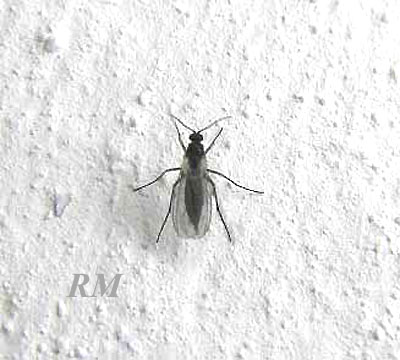 Sciarids. This is the most common type of midge that grows in orchids. The length of an adult does not exceed 5 cm. Black pests are similar to small flies. They lay their eggs in the ground, where larvae, similar to small worms, develop and grow. The midges themselves are not capable of causing damage to the plant. Here the larvae are the main danger. They spoil the roots of seedlings, seedlings and weakened plants. It is possible that the root system of a healthy orchid will also be damaged. In these places, fungus and rot are formed at the root.
Sciarids. This is the most common type of midge that grows in orchids. The length of an adult does not exceed 5 cm. Black pests are similar to small flies. They lay their eggs in the ground, where larvae, similar to small worms, develop and grow. The midges themselves are not capable of causing damage to the plant. Here the larvae are the main danger. They spoil the roots of seedlings, seedlings and weakened plants. It is possible that the root system of a healthy orchid will also be damaged. In these places, fungus and rot are formed at the root.
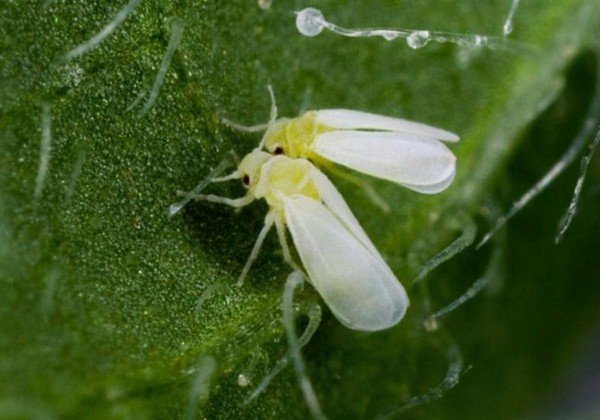 Whiteflies. These midges got their name because of the pronounced white color of the wings. They look like small butterflies. It is enough to touch the damaged plant, they will immediately scatter throughout the room. The main food of these pests is orchid juice, which is extracted from the leaves. When these midges appear, the orchid quickly fades. In this case, the leaves begin to turn yellow and curl.
Whiteflies. These midges got their name because of the pronounced white color of the wings. They look like small butterflies. It is enough to touch the damaged plant, they will immediately scatter throughout the room. The main food of these pests is orchid juice, which is extracted from the leaves. When these midges appear, the orchid quickly fades. In this case, the leaves begin to turn yellow and curl.
 Thrips. The size of these pests reaches 2.5 mm. They are able to develop in all types of orchids. An adult has the form of a stick with wings folded on its back. These midges are active at night, so they hide under leaves during the day. This explains the fact that it is quite difficult to detect pests. Often a person learns about the presence of such midges already with a strong infection of the plant. Midges lay their eggs on the leaves. After hatching, the larvae feed on the leaves, which leads to the formation of dark spots. Insects feed not only on leaves, they are able to eat roots, stems and flowers.
Thrips. The size of these pests reaches 2.5 mm. They are able to develop in all types of orchids. An adult has the form of a stick with wings folded on its back. These midges are active at night, so they hide under leaves during the day. This explains the fact that it is quite difficult to detect pests. Often a person learns about the presence of such midges already with a strong infection of the plant. Midges lay their eggs on the leaves. After hatching, the larvae feed on the leaves, which leads to the formation of dark spots. Insects feed not only on leaves, they are able to eat roots, stems and flowers.
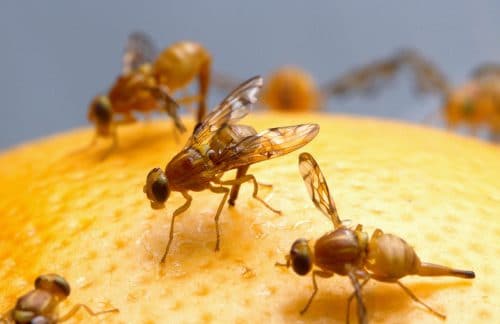 Fruit midges. This type of pest is rare in orchids. The length of each individual is about 3 mm. The main food of these midges is anything that can rot or sour in a flower pot. If you use mineral fertilizers that can rot, this can cause this type of pest to appear. In fact, this type of midges is not harmful to the orchid. But when they appear, you should think about it. After all, they find food for themselves somewhere.Perhaps it is the remnants of your food that has fallen under the table or behind the cabinet. In addition, the very fact of the presence of midges in the apartment is disgusting. They scatter throughout the dwelling, getting on dishes, food and drinking water.
Fruit midges. This type of pest is rare in orchids. The length of each individual is about 3 mm. The main food of these midges is anything that can rot or sour in a flower pot. If you use mineral fertilizers that can rot, this can cause this type of pest to appear. In fact, this type of midges is not harmful to the orchid. But when they appear, you should think about it. After all, they find food for themselves somewhere.Perhaps it is the remnants of your food that has fallen under the table or behind the cabinet. In addition, the very fact of the presence of midges in the apartment is disgusting. They scatter throughout the dwelling, getting on dishes, food and drinking water.
Why do insects appear on plants?
Often, the larvae of the pest are brought in together with the soil. After flowers are planted in it, midges appear, which multiply rapidly. If insects start in one of the pots with houseplants, they will also inhabit the neighboring ones, if there are suitable conditions. One of the main conditions is sufficient soil moisture.
If you notice damage, but did not find pests, delay using chemicals - this may be the result of sunburn or other troubles
Most often, sciarids settle in the soil where orchids grow - small insects 3-5 mm long, black in color, popularly called flower midges. In fact, these are mushroom or fruit gnats, similar to small flies. These insects lay eggs in the ground, where larvae, similar to worms, 6-7 mm long, white, develop.
Sciarids themselves do not harm plants, but their larvae damage seedlings, thin roots of weakened plants and seedlings. These injuries can become foci of rot and places of infection with fungal diseases. Therefore, small black "midges" that have settled in orchids are capable of causing significant damage to plants.
Another type of insect that infects orchids and looks like midges is thrips. Insects are very small, only 2–2.5 mm long. They are capable of causing serious damage to any type of orchid. Thrips look like small dark brown or black "sticks", equipped with two pairs of wings, which are folded on their back.
They run fast and instantly hide in the ground. Unlike sciarids, thrips, having flown to the plant, try to hide in the substrate as quickly as possible. These pests are nocturnal, and it is extremely rare to see them during the day. Therefore, to make sure that thrips are bred on the orchid, some growers are guarding near the flowerpot with a flashlight.
Sometimes fruit flies (fruit flies) settle in pots where orchids grow. It is a small insect about 3 mm long. They feed on fermented fruits and vegetables, as well as plant residues. In the substrate, these midges settle if the plants are watered with tea leaves or sprinkled with the remains of tea from a teapot as fertilizer, which is undesirable.
Sometimes they are attracted by semi-rotten moss or peat. But fruit flies can choose a flower pot as a breeding ground if the soil in it is constantly over-watered. For plants, the insects themselves and their larvae are completely harmless, but flower growers should be alerted by the fact of their settlement in the ground - there is definitely excessive watering, which may not be harmless to the root system.
Keep a close eye on watering the orchid - excessive moisture in the soil can cause midges to appear

Let's list a few more factors that contribute to the appearance of midges on the surface of a plant or in the soil itself:
- abundant or irregular watering (it is necessary to let the soil stand completely dry for at least two to three days);
- the presence of decorative moss on the surface of the earth (it does not allow the soil to breathe);
- fertilization with folk remedies such as tea leaves, coffee grounds, eggshells;
- moistening with water infused with bread or other yeast products.
How to deal with gnats in orchids
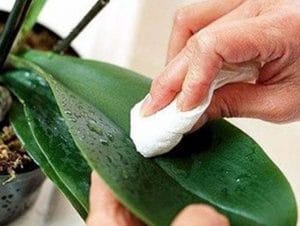 After you have determined which insects are in the flower pot, you can choose the appropriate fight option:
After you have determined which insects are in the flower pot, you can choose the appropriate fight option:
- for the destruction of fruit midges, you can do without the use of chemicals. Here it is enough to remove moss, tea and other substances that can decompose from the pot. Reduce watering volume. Fallen petals do not need to be left in the pot.Remove what attracts midges and they will soon disappear. For the destruction of flying adults, you can use ordinary fly sticks;
- the fight against cyarids is more difficult. If you nevertheless allowed them to appear in your apartment, you will have to use the products of the chemical industry. So, for soil cultivation, you can apply "Thunder-2", "Bazudin". In addition, it is recommended to use preparations intended for processing window frames, shelves on which pots, window sills and racks are installed;
- for the destruction of white-winged butterflies, it is recommended to use insecticidal preparations. Processing should be carried out every five days. The results will be visible after a few procedures. "Fury", "Sherpa", "Aktellik" means are suitable here. It is also recommended to thoroughly rinse the bark in which the plant “lives”. To do this, use plenty of water;
- thrips are also removed by chemical means. The drug "Aktilikom" is suitable here. You need to process the plant three times within ten days. After the destruction of insects, it is recommended to periodically rinse the leaves and "spill" the soil monthly.
Folk methods of struggle
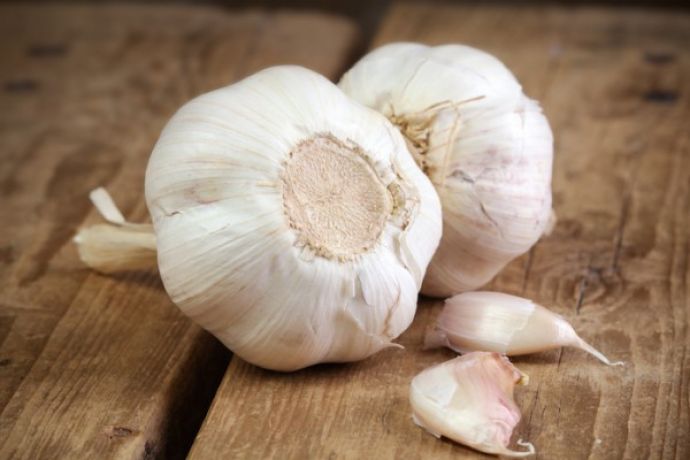 The complexity of the treatment of indoor plants lies in the fact that for this it is not always possible to use insecticidal agents. In this case, folk methods will come to the rescue, which have repeatedly proven their effectiveness:
The complexity of the treatment of indoor plants lies in the fact that for this it is not always possible to use insecticidal agents. In this case, folk methods will come to the rescue, which have repeatedly proven their effectiveness:
- the smells of garlic, citrus and lavender scare away midges;
- for several days, wash the leaves of the infected plant with warm water with the addition of laundry soap;
- transplant the orchid into clean new soil, thoroughly rinsing the roots;
- water the infected plant with a weak solution of potassium permanganate;
- plant leaves can simply be rinsed under the shower;
- Sprinkle dry mustard on the soil weekly;
- bake river sand in the oven and sprinkle it on the ground. If necessary, the procedure is repeated after a few days.
(Video: "Phalaenopsis Orchid! The Super Secret of Pest Control!")
How to fight
If midges are bred in orchids, you can find out how to get rid of them only by establishing exactly the type of insect. Having recognized the enemy, you need to urgently take action. The flower with thrips should be removed away from the rest, at least for a month, treated 2-3 times with an interval of 10 days with Fitoverm or Atellik. Moreover, the processing must be done by the plant and the substrate itself.
But you should start with a warm shower, which will wash away some of the pests, then you should carefully cut off all damaged parts of the plant, be sure to treat the cuts with charcoal
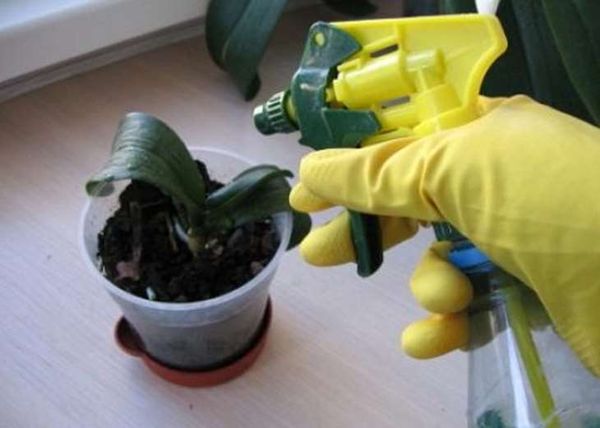
Experienced flower growers try to use drugs of chemical origin as little as possible; they prefer to leave such potent agents as a last resort. You can try to save the plant with the help of proven folk recipes - soap solution, infusion of garlic, a solution of olive or grape oil. But it must be remembered that soap and oil solutions, as well as sprays from a store, completely cover the leaf plate, thereby hindering the process of photosynthesis.
Treatment with Aktellik or spraying every five days with Aktara, Bazudin, Fury or other insecticides will help to get rid of whiteflies. It will be useful to rinse the leaves with a solution of laundry soap.
You can destroy the bulk of adults with a vacuum cleaner - you need to very carefully approach the plant, scare away insects and collect with a vacuum cleaner
Sciarids are easily caught on sticky tape, so adults can be destroyed. You can quickly defeat these pests by treating the substrate with an insecticide for the ground, and the window sill, window frame and all nearby surfaces with an insecticide for flying insects.

The main reasons for the appearance of midges in orchids
The main reason for the appearance of various harmful insects in orchids is the increased moisture content of the soil.A tropical epiphyte plant cannot be "poured". Wait a few days between waterings to allow the potting soil to dry out. Waterlogging of the substrate causes its decay, and this attracts pests.
Another possible reason for the appearance of parasites on orchids is the poor quality of the soil substrate:
- lack of heat treatment, pest infestation;
- the presence of moss and peat in the substrate, which manufacturers add for a longer preservation of moisture - when decomposed, they become an attractive "delicacy" for parasites;
- use for watering or as fertilizer of a dormant tea brew or strong tea - this accelerates the decay of the soil in the pot.
If the flowers are located in the kitchen, relatively safe fruit flies and harmful flying insects spread quickly from nearby fruits and vegetables, especially in hot weather.
Thrips can be "infected" not only from plants standing nearby, but even from crops located on adjacent floors of the house - during airing, they can be brought into the apartment by the air stream, and these insects fly well.
In addition, there is a high probability of bringing them into the room along with a bouquet of wildflowers. Pests are also transferred from damp basements through hoods, ventilation shafts and pipes. Until the dampness in these rooms is eliminated, mushroom mosquitoes will be regular "visitors" of all colors in the house.
Top dressing with drugs
You can get rid of midges in orchids using the following control methods:
- Sciarids. Plants are processed in 3 stages. To destroy the insect on the leaves and stems, the well-known preparations "Reid", "Raptor" or "Neo Dichlorvos" are used. Under such conditions, the earth is necessarily etched with chemical preparations tapa "Bazudin" or "Thunder-2". The third stage is to disinfect the surface where the pot with the flowerpot was located. It is carried out with hydrogen peroxide or other disinfectant.
- Whiteflies. Treating leaves and stems from white pests is carried out with the preparations "Sherpa", "Aktara" or "Fury". The root part is not touched.
- Drosophila. To eliminate these pests, aerosols are used. The most popular among them is Dichlorvos. Aerosols "Hexachloran" and "Combat" show good efficiency. They are used strictly according to the instructions. After spraying, after half an hour, the room is ventilated.
- Thrips. This type of parasite is difficult to eliminate. In this case, the drugs "Actellik" and "Fitoverm" are used. Chemical treatment of parasites is carried out every 10 days until complete destruction. At the same time, the soil is washed under the shower with regularity once a month.

Preparations for fighting midges on an orchid
Folk remedies
If midges of small sizes are bred in the orchid, folk remedies help to get rid of them at home. Among the effective methods of struggle are:
- Garlic infusion. It is prepared following the proportion of 1 chopped head of garlic and 600 ml of boiled water per plant. Garlic filled with boiling water is left to infuse for 3-5 hours. After complete cooling, the leaves of the plant are treated. The pulp from the infusion is deepened into the soil: this gives additional protection against pests. Alternatively, several cut garlic cloves are buried in each infected flowerpot.
- A solution of potassium permanganate. The dosage of potassium permanganate is strictly observed, since the drug leaves burns on the indoor plant. A solution based on it is made as follows: 1 g of potassium permanganate is added to 1 liter of boiled and cooled water. The liquid should take on a pinkish tint. Spraying and watering with this solution is carried out no more than once every 8-10 days throughout the month.
- Soap solution. For preparation, take 25 g of finely ground gray laundry soap and pour 1 liter of warm water. After the soap is completely dissolved, the leaves of the plant are washed. The procedure is carried out 2-3 times a month in case of pest infestations.
- Vegetable oil.Add 1.5 tbsp to 1 liter of water. l. vegetable oil. The solution is used only for spraying the flowerpot.
- Ash. Wood ash is spread over the top of the soil and on the roots of the flowerpot. It will rid the houseplant of parasites and reduce the acidity of the soil.
- Sulfur. 4 matches are immersed in the soil with the wooden end up, and the top layer of the substrate is moistened with water. Matches are changed every 2 days.

Getting rid of midges at home
Additional methods of protection
To get rid of midges, flower lovers have tried different methods. For example, a vacuum cleaner and special traps are used as an addition to traditional methods. Before the treatment procedure, a hose from a vacuum cleaner is passed near the plant: this removes the flying parasites from the indoor flower.
Commercial fly traps are also used to catch the parasite. A similar thing is done at home. For this:
- take yellow cardboard or thick paper painted in this color;
- a bright card is smeared with a thin layer of honey;
- the resulting product is hung around the flowerpot.
Periodically, the cartons are removed. Traps are changed frequently.
Step by step instructions on how to deal
With midges
The pest control process includes:
- If insects are found, immediately treat the orchid and the substrate, first rinse under running water, then, based on the species that inhabited the area, disinfect if necessary.
- It is also imperative to spray the substrate and the lower part of the plant with phytoverm according to the instructions twice with an interval of 7-10 days.
- Repeat the procedure twice in 7-8 days to be sure of the exact destruction of small midges and a favorable soil structure for the plant.
With white bugs
- A solution of garlic helps very well in pest control. To do this, chop two heads of garlic and pour a liter of water, put in a dark cool place to infuse for about 5-7 days. After that, strain the resulting infusion with water halfway and spray the plant.
- To get rid of gluttonous bugs that harm the plant, changing the climate to an unfavorable one usually helps.
- In greenhouses, moisture is reduced, because it is moist soil that is extremely loved by all pests for reproduction.
- If this is not enough, then more effective methods are used using mechanical-type traps.
- Most often, the most effective method is to use bait. On the surface of the substrate, it is worth putting a bait (a piece of cucumber, for example) and then watching for a certain period of time, waiting for someone to come to eat. Some people put a regular saucer filled with beer (beer trap), preferably dark. The scent attracts some species of inhabitants, allowing them to be caught.
This procedure allows you to manually catch large pests such as snails or spiders. It is worth repeating the collection of the "harvest" until the complete disappearance of harmful guests, and also periodically check their presence in this way.
The main thing is not to forget about the bait, not to leave it for too long, so that it does not mold and rot, triggering other diseases of the delicate flower.
Types and names, what they look like (photo)
For effective control of midges, it is necessary to determine their type. Midges in orchids may not do them significant harm, or they can destroy the plant.
Mushroom gnats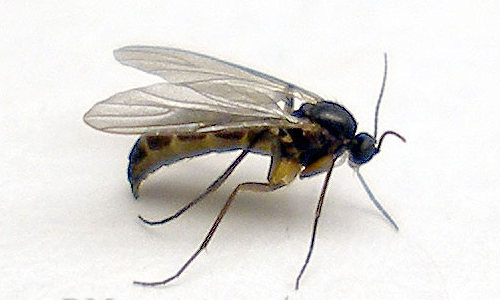
Sometimes flocks of midges very similar to small mosquitoes begin to fly near orchids. Their length
about 4 mm, black or dark gray, they have two transparent wings. Insects, also called sciarids, appear in the fall or spring, when there is no heating and the room is humid and cool. The mushroom mosquitoes themselves do not pose any danger for orchids. But the larvae, which are in the ground and reach a length of up to 1 cm, harm the roots of orchids. In places of damage to the root system, rot is formed, and the plant dies.
Whiteflies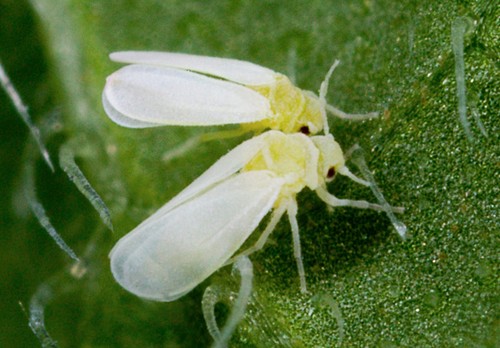
If you touched an orchid and a swarm of white midges flew up, then these are whiteflies. The midges are very
small size (1–2 mm long). Whitefly larvae are located on the stems and the underside of leaves, leaving yellow streaks. Whiteflies are located on the inside of the leaves. During the period of development, its larva infects up to 50% of young stems and leaves of an orchid. The stems are deformed, the leaves dry and the plant dies.
Fruit flies
If near the pot with orchids fly small yellow dipterans with red eyes, then these are Drosophila (fruit midges). There are about a thousand different types of them. One adult fruit fly can lay 400 eggs. After a day, larvae appear from them, and on the sixth day, adults up to 5 mm in size are formed. The nutrient medium for Drosophila is rotting plant residues, fruits and vegetables. Midges appear on the surface of the substrate when the process of decay of plant residues begins as a result of abundant watering. Drosophila does not do much harm to orchids.
eyes, then these are Drosophila (fruit midges). There are about a thousand different types of them. One adult fruit fly can lay 400 eggs. After a day, larvae appear from them, and on the sixth day, adults up to 5 mm in size are formed. The nutrient medium for Drosophila is rotting plant residues, fruits and vegetables. Midges appear on the surface of the substrate when the process of decay of plant residues begins as a result of abundant watering. Drosophila does not do much harm to orchids.
Thrips
These are midges with a striped elongated body and wings pressed against it. They can be located in the ground. And most often they live on leaves, the juice of which they feed on. If a lot of dark dots (bite spots) appear on the leaves of plants, and sometimes a silvery film, then thrips have appeared in the orchids. Affected leaves dry up and orchids die. Thrips are difficult to spot during the day, they hide in the soil. They are active at night. Insect larvae mainly affect the leaves, which darken and fall off. Flowers and roots are also affected by pests. Thrips multiply rapidly, so urgent measures should be taken to destroy them.
in the ground. And most often they live on leaves, the juice of which they feed on. If a lot of dark dots (bite spots) appear on the leaves of plants, and sometimes a silvery film, then thrips have appeared in the orchids. Affected leaves dry up and orchids die. Thrips are difficult to spot during the day, they hide in the soil. They are active at night. Insect larvae mainly affect the leaves, which darken and fall off. Flowers and roots are also affected by pests. Thrips multiply rapidly, so urgent measures should be taken to destroy them.
Conclusion
If flying midges appear near the indoor flower, all possible measures should be taken to combat it, because parasites greatly interfere with the normal growth of the flower. Timely assistance to the plant will get rid of pests and contribute to the luxurious flowering of the orchid.
To prevent midges from growing in the epiphyte:
- observe light and temperature conditions;
- water the flower sparingly. In a container with an orchid, water stagnation and drying of the substrate are not allowed;
- Phalaenopsis is fed once every three weeks;
- when buying an orchid in a store, it is immediately transplanted into a new soil and pot;
- do not fertilize epiphyte with food waste.
Any plant cannot develop without problems. Almost all of them can be solved. However, this can only be done with a competent approach: you need to act in a timely and systematic manner, and also try not to overdo it with treatment. Because sometimes over-caring can be destructive.
If you find an error, please select a piece of text and press Ctrl Enter.
As we already understood, not a single living creature, which is our orchid, can exist without the occurrence of any diseases. But, if you react to the appearance of pests in a timely manner, you can save your plant. Therefore, do not procrastinate with rescue measures. But this must be done competently and thoroughly. One of the main rules of any treatment is systematicity.
Otherwise, your irregular therapeutic measures can be perceived by the flower as another stress, which will significantly worsen the already deplorable state of the orchid. Follow the instructions and our advice, and your pet will continue to attract the admiring glances of your household.


